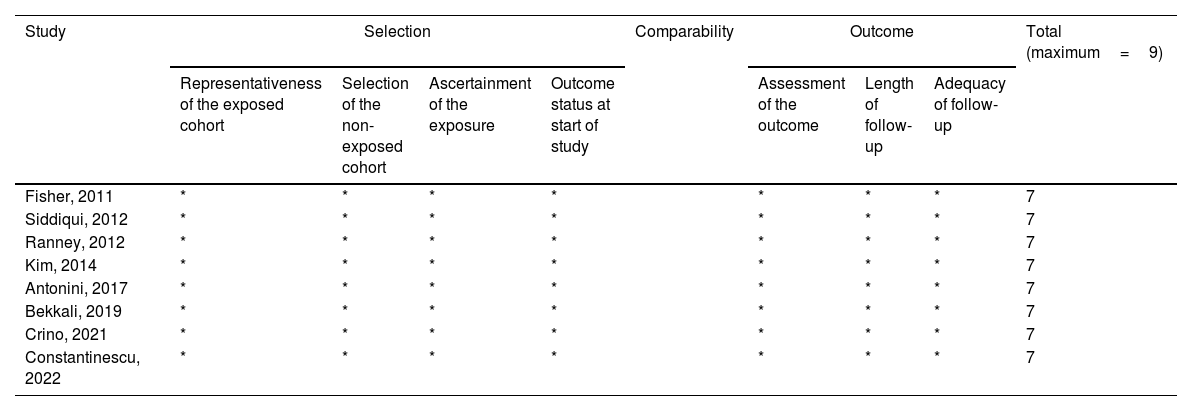Pancreatobiliary tumours are challenging to diagnose exclusively by imaging methods. Although the optimum moment for carrying out the EUS is not well defined, it has been suggested that the presence of biliary stents may interfere with the proper staging of tumours and the acquisition of samples. We performed a meta-analysis to evaluate the impact of biliary stents on EUS-guided tissue acquisition yield.
Material and methodsWe conducted a systematic review in different databases, such as PubMed, Cochrane, Medline, and OVID Database. A search was made of all studies published up to February 2022.
ResultsEight studies were analyzed. A total of 3185 patients were included. The mean age was 66.9±2.7 years; 55.4% were male gender. Overall, 1761 patients (55.3%) underwent EUS guided tissue acquisition (EUS-TA) with stents in situ, whereas 1424 patients (44.7%) underwent EUS-TA without stents. The technical success was similar in both groups (EUS-TA with stents: 88% vs EUS-TA without stents: 88%, OR=0.92 [95% CI 0.55–1.56]). The type of stent, the needle size and the number of the passes were similar in both groups.
ConclusionsEUS-TA has similar diagnostic performance and technical success in patients with or without stents. The type of stent (SEMS or plastic) does not seem to influence the diagnostic performance of EUS-TA. Future prospectives and RCT studies are needed to strengthen these conclusions.
Los tumores pancreatobiliares son lesiones difíciles de diagnosticar exclusivamente por métodos de imagen. Aunque no está bien definido el momento óptimo para la realización de la ecoendoscopia (EUS), se ha demostrado que la presencia de stents biliares puede interferir en la correcta estadificación de los tumores y la toma de muestras. Realizamos un metanálisis para evaluar el impacto de los stents biliares en el rendimiento de la adquisición de tejido guiada por EUS.
Material y métodosRealizamos una revisión sistemática en diferentes bases de datos, como PubMed, Cochrane, Medline y OVID Database. Se realizó una búsqueda de todos los estudios publicados hasta febrero de 2022.
ResultadosSe analizaron 8 estudios. Se incluyeron un total de 3.185 pacientes. La media de edad fue de 66,9±2,7 años; el 55,4% fueron pacientes de sexo masculino. En total, 1.761 pacientes (55,3%) se sometieron a biopsias guiadas por EUS con stents in situ, mientras que 1.424 pacientes (44,7%) se sometieron a dichas biopsias sin stents. El éxito técnico fue similar en ambos grupos (EUS con stents: 88% vs. EUS sin stents: 88%, OR=0,92 [IC 95% 0,55-1,56]). El tipo de stent, el tamaño de la aguja y el número de pases fueron similares en ambos grupos.
ConclusionesLa biopsia por EUS tiene un rendimiento diagnóstico y un éxito técnico similares en pacientes con o sin stents. El tipo de stent (SEMS o plástico) no parece influir en el rendimiento diagnóstico de la adquisición de tejido guiada por EUS. Se necesitan futuros estudios prospectivos y estudios aleatorizados controlados para fortalecer estas conclusiones.












